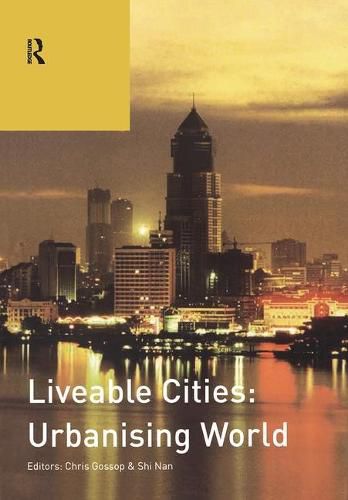Readings Newsletter
Become a Readings Member to make your shopping experience even easier.
Sign in or sign up for free!
You’re not far away from qualifying for FREE standard shipping within Australia
You’ve qualified for FREE standard shipping within Australia
The cart is loading…






This book is about the unprecedented challenges facing the worlds cities as they expand and develop in response to demographic change, human aspirations and the forces of globalization. Most of that growth is taking place in the developing countries and it is here that the megacities (places with over ten million people) seem destined to emerge during the next few decades. While there are considerable variations in the rates of city expansion between and within the different world regions, much of that growth has taken place as formless urban sprawl, as well as the slums and squatter settlements to be found in many of the worlds cities.
These urbanizing areas face acute economic, social and environmental problems. They stem from, amongst other things, fundamental changes in the nature of work, the economic crisis that began in 2008, the continuing, and often growing, inequalities within the urban population and from the severe pollution and hazardous living conditions that afflict many urban communities. Without suitable action to address them, those problems are likely to worsen as the effects of human induced climate change become ever more apparent.
So how can our cities become truly liveable places? Published in tandem with ISOCARP’s 47th World Congress held in Wuhan, China, the many case studies in this publication describe new planning and other approaches that seek to create more sustainable, more liveable, cities.
$9.00 standard shipping within Australia
FREE standard shipping within Australia for orders over $100.00
Express & International shipping calculated at checkout
This book is about the unprecedented challenges facing the worlds cities as they expand and develop in response to demographic change, human aspirations and the forces of globalization. Most of that growth is taking place in the developing countries and it is here that the megacities (places with over ten million people) seem destined to emerge during the next few decades. While there are considerable variations in the rates of city expansion between and within the different world regions, much of that growth has taken place as formless urban sprawl, as well as the slums and squatter settlements to be found in many of the worlds cities.
These urbanizing areas face acute economic, social and environmental problems. They stem from, amongst other things, fundamental changes in the nature of work, the economic crisis that began in 2008, the continuing, and often growing, inequalities within the urban population and from the severe pollution and hazardous living conditions that afflict many urban communities. Without suitable action to address them, those problems are likely to worsen as the effects of human induced climate change become ever more apparent.
So how can our cities become truly liveable places? Published in tandem with ISOCARP’s 47th World Congress held in Wuhan, China, the many case studies in this publication describe new planning and other approaches that seek to create more sustainable, more liveable, cities.